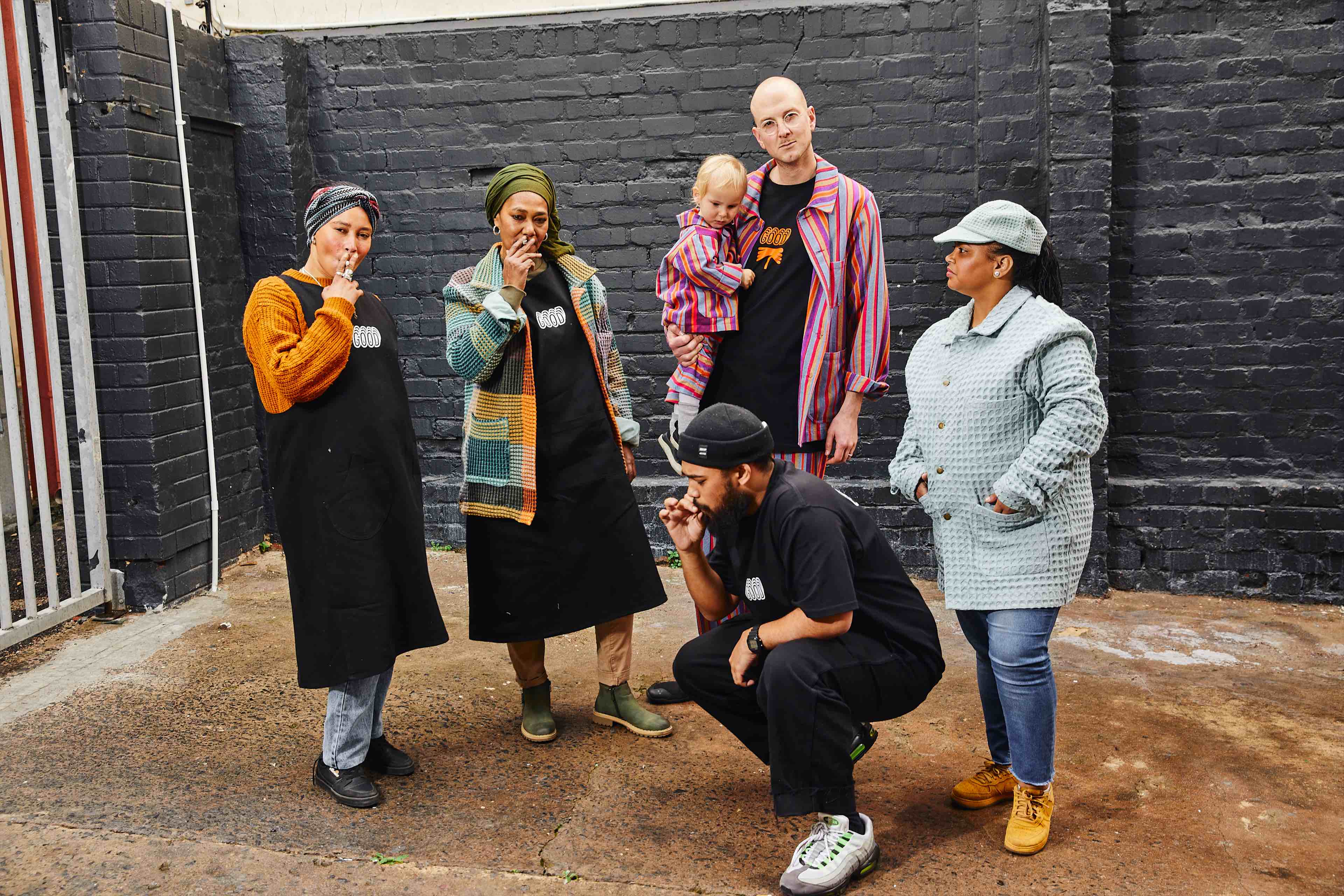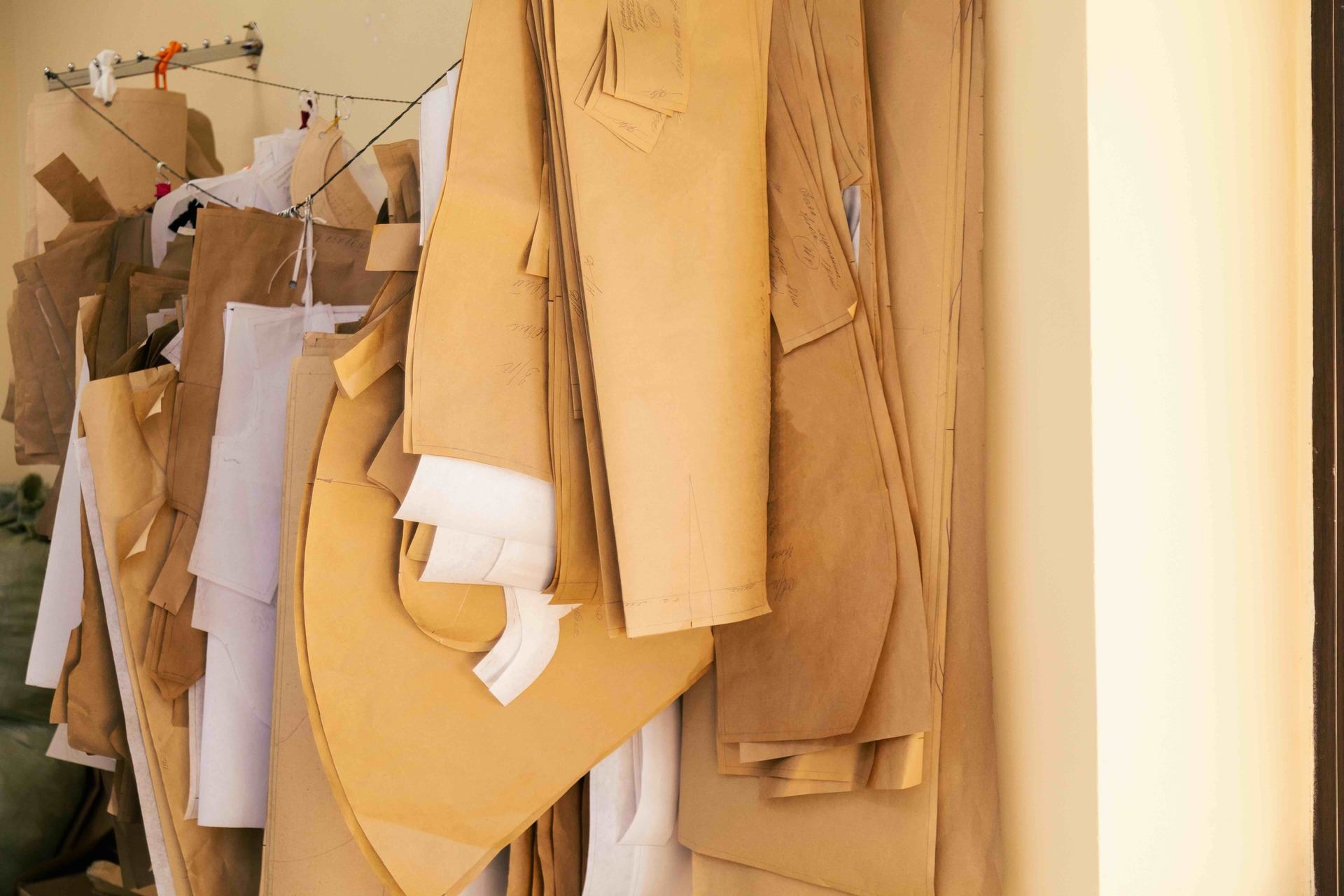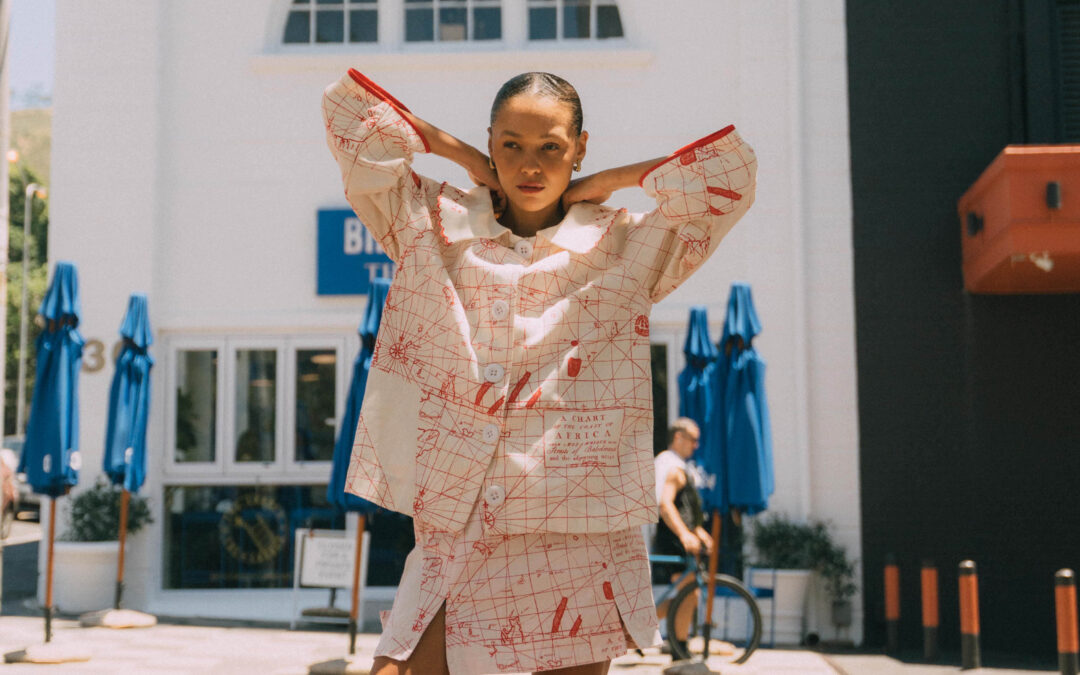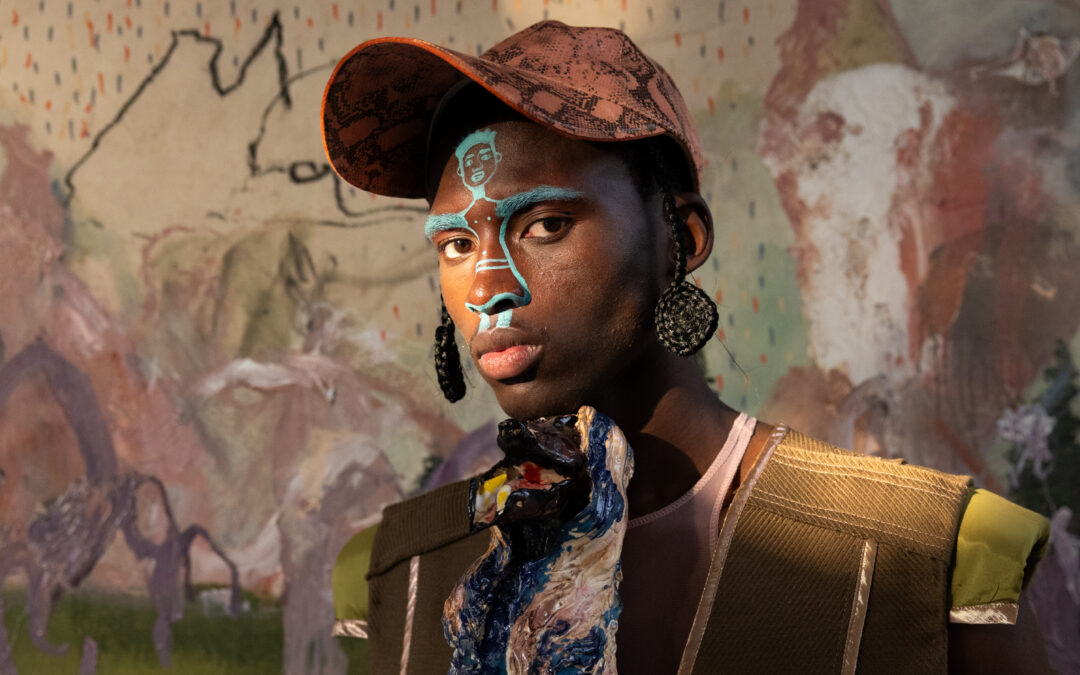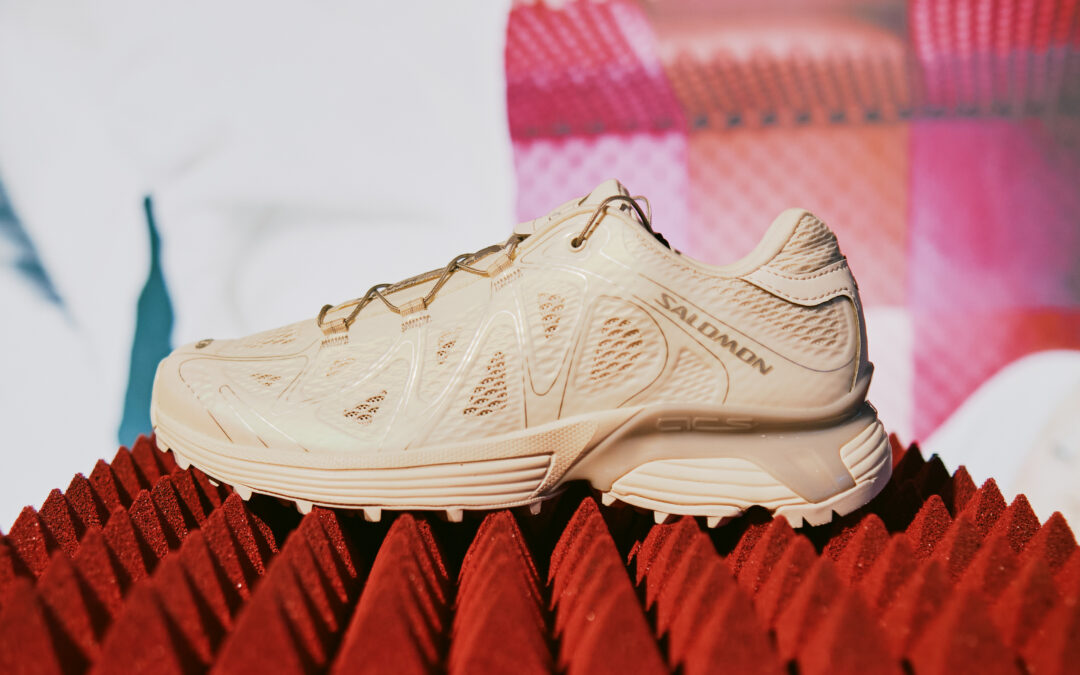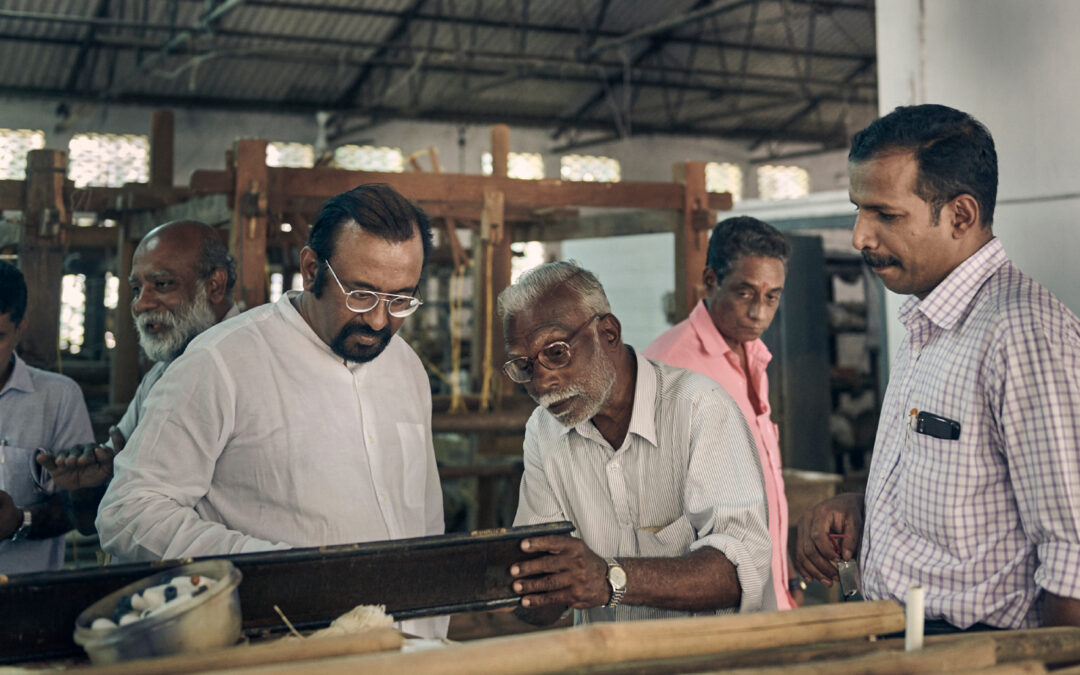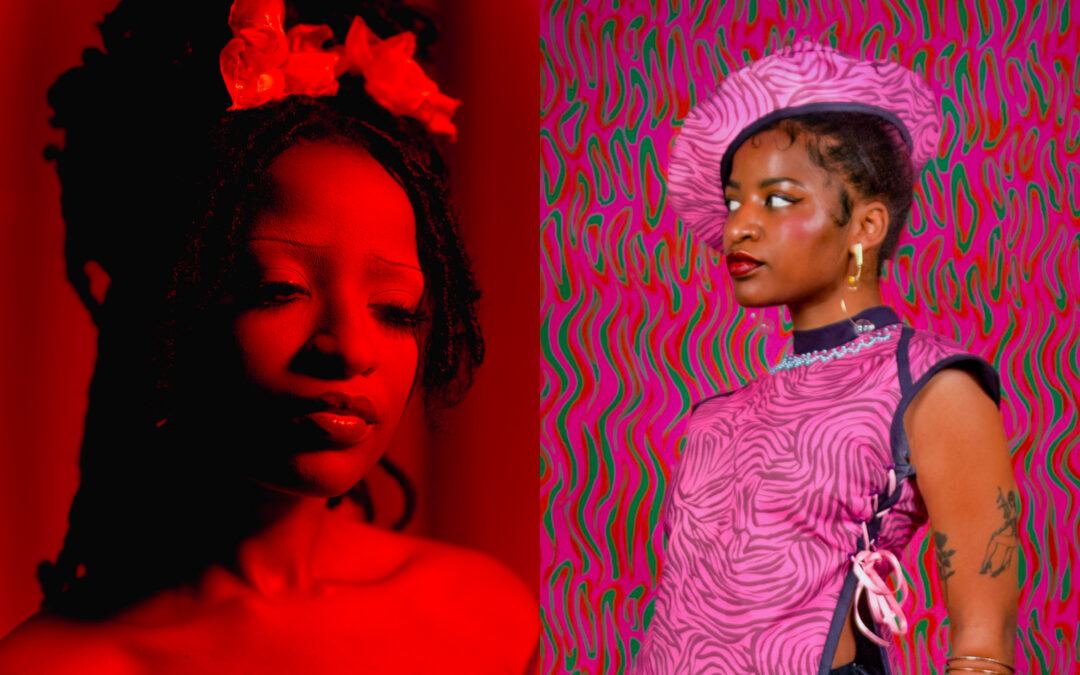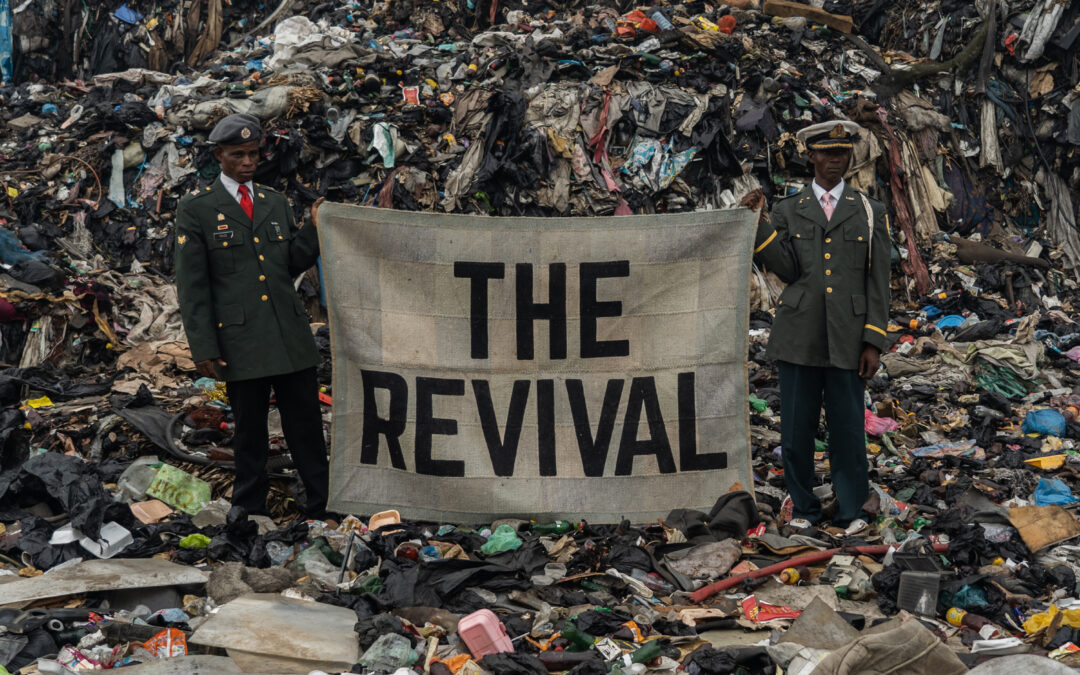When thinking of South Africa’s fashion landscape, arises the overarching question of our nation’s storied garment manufacturing industry. This conversation is deep and complex and one that we will not claim to cover even a fraction of the nuances involved. In looking at any industrial mechanism, we are always in essence looking at a single thing: the historical struggle of labour. The question of human labour is political, economic and social – and as South Africa’s fashion industry continues to grapple with the influences of each of these stratas, this chapter of Interlude is intended to peel back the veneer beyond design, or fashion image-making, or commerce. If I can hope that anything is derived from this piece, it is the remembrance that every single piece of clothing that we come into contact with, originated from the influence and skill of human hands, and the spaces (factories) in which these garments take shape.
South Africa’s garment industry pre-1994 was a reflection of apartheid policy – and like all industries in which human labour could be exploited, garment workers tended to be Black or Coloured South Africans, who were marginalised and restricted to low-paying, labour-intensive jobs in the manufacturing sector. The garment industry throughout the country reflected political and social resistance, as one of the spaces in which workers organised labour unions and engaged in strikes and protests to demand better wages, working conditions and an end to discriminatory practices. These efforts contributed to the gradual improvement of labour rights within the industry, though it wouldn’t be until the abolishment of apartheid that unionising truly began to shape any state of equity – for more on this, Shane Godfrey’s work ‘Cutting The Cloth to Fit the Coat’ paints a historical picture of labour unions in the garment industry, and how attempts for collective bargaining for better working conditions were established.
With the achievement of a democratic nation from 1994 onwards, came the dismantling of previously imposed sanctions on our economy. For the first time, in a meaningful and tangible way, South Africa’s garment and textile industries could operate without restrictive trade embargoes. The 1990s was the decade of a new dawn – one in which the emergence of a domestic market for locally manufactured goods, accessible by everyone, became possible – coupled with new opportunities for international trade and collaboration.

Thread Options by Cottonbro, via Pexels
When we think of our country’s current state of being, it is always in terms of the contrast between apartheid and democracy, yet – our vantage point does not operate outside of the global context. Paradoxically, while we were finding our feet at the precipice of new opportunities and a new hope for freedom – so too, globalisation was taking shape in ways that had never been seen before. Globalisation, afforded by technology, saw an increased interdependence between countries and economies; the exchange of goods, services, ideas and connection took shape as the way in which we interact with the world. Today, globalisation is the status quo; then, in the 1990s, it begged a radically new way of participating in the world.
It can’t be overstated the paradoxical nature of such a tension in South Africa’s garment industry from the 1990s until today. On one hand, we are building a new fashion future – from the ashes of a hard-won freedom, alongside a changing world that requires a constant reshifting of perspectives. So, when countries such as China and Bangladesh came to the fore as production economies that were unable to be matched; South Africa began to experience a loss of competitiveness in terms of cost and scale.
What do we do with this, and what have we done with this? Well, some South African fashion manufacturers are increasingly focusing on quality, craftsmanship, and design aesthetics to carve out niches in the global market. Interlude seeks to track precisely this – and it’s clear that in our ‘infancy’ as an emerging market, the growing global demand for ethically produced and sustainable fashion presents an opportunity for South Africa to leverage its commitment to fair labour practices and environmental stewardship as a competitive advantage. While the tension between global economic forces and local contexts persists, it also holds the potential to fuel the dynamic evolution of South Africa’s fashion manufacturing sector.
All this to say, there are designers and creative wayshowers that are actively engaged with the revival and reassertion of South Africa’s fashion manufacturing landscape. With gratitude, I share their incredibly thoughtful perspectives; Daniel Sher, founder of fashion brand Good Good Good & concept store Duck Duck Goose, is also a factory-owner. His brand, that he shares with his wife Paige, was born from his introduction to the garment industry by Paige’s family. Daniel explains that, “my wife’s mom Jacqui, who recently retired, has been a CMT factory owner for the past 30 years and has been producing womenswear for some of South Africa’s biggest department stores. In total, Jacqui has been in clothing production management for a total of 53 years. In 2011, 2 years after I met my wife, Paige, she started producing some of my first garments for our first clothing brand, me.plus.one. After a career in financial accounting, I joined Jacqui & Paige’s factory full time in 2016, and we started our fashion brand Good Good Good, and simultaneously started producing for a selection of South African fashion brands and designers. In 2022, the demand for our services grew to the point where the space that we were renting from Jacqui became too small for us and we were forced to look for a bigger space for our manufacturing operation. After finding a space, we decided to register a separate entity which we called Together MFG.” Daniel and Paige’s commitment to providing a fully serviced manufacturing offering in Cape Town reflects a shifted focus that many in our country’s design industry are adapting towards, “We view Together MFG as a boutique luxury manufacturing service, where we hold the hand of our clients throughout the design and production process to achieve a final product that is of the highest possible standard. We are proud to count brands such as Christian Dior, Thebe Magugu, Wanda Lephoto, Rich Mnisi and various other distinguished brands as our clients. The core product of our factory is a high quality, 100% Southern African made T-Shirt as well as high quality fleece items such as hoodies, sweaters and track pants.”
Daniel & Paige Sher’s Factory, photographed by Johno Mellish for Courier Magazine
Founder of Cape Town-based streetwear brand Socioculture, Naeelah Jamut is a rare designer – in that she painstakingly makes almost all of the pieces for each of her collections, sometimes with the assistance of her mom – a veteran of Cape Town’s historical garment district of Salt River. Socioculture was born out of the fashion production lineage that Naeelah originates from, and the label is a love-letter to the inherent craftsmanship born out of the city. In asking about her family ties to Cape Town’s manufacturing history, Naeelah shares some of the reflection passed onto her by Fatima, her mom – “my mom started in fashion production when she was 15, working as a garment packer – this was in the 1960s and 1970s. This was at Burtish in Salt River, and everything they did back then was manual – until they brought machines in from German. Later, my mom became sample-hand, which meant she was the main seamstress with seven women in her team, who each had allocated tasks – one would do the collar, the other sleeve and so on. At this time, a lot of things were locally produced. Cape Town had its own fabric mills, factories that made zips, threads and trims.” The shift from local production to international sourcing came as a devastation to the industry, Naeelah’s explains – “the company that she worked for was eventually bought out and they produced for brands such as Diesel and Levis, with a specialisation in workwear. My mom says that the noticeable shift began with the introduction of Mr Price in the 1990s – which caused a lot of boycotts, because they were importing things and not producing locally. This was unheard of. I know that Mr Price have since returned to producing locally.”
Started as a self-funded venture by a mother-daughter team, The Joburg CMT is led by Silver, co-owner and production manager. Before launching the CMT, Silver ran a successful business focused on pattern making and sampling for local designers and retailers. Expanding their services, Joburg CMT now assists smaller designers with limited production runs, filling a gap not commonly addressed by other CMT providers. It is a common experience of emerging designers to be rejected by CMTs, who generally accept a minimum of 50 units to be made per garment; it is an intense undertaking, to amass such a large amount of stock, that also requires a start-up capital not generally afforded by designers. When asking Silver what some of the challenges are from the perspective of a bespoke CMT in Johannesburg, Silver notes that “we experience a limited supply of materials and equipment such as trimmings, machine attachments and fabrics. Cost price of manufacturing in South Africa is quite high compared to manufacturing in other countries such as Mauritius, China, so often clients or potential clients state that our pricing can be quite high – but our expenses are very high and in order to keep the business sustainable. We cannot compete with international manufacturing prices. Then, there are issues such as load-shedding and water shortages, generator fuel costs, delays on deliveries, staff may be sitting with no work or sent home.” Alongside this, are the micro-market variances in customer behaviour, with Silver explaining that “We believe consumers in Gauteng on average are not as supportive of locally made clothing brands as Cape Town consumers are. This lack of regional support has led to skills shortages, and it is a struggle to find staff with skills such as cutting, pattern making and sewing, while we do not have the capacity to train people at this time.”
Echoing the concerning lack of skilled artisans, Daniel says that “the biggest challenge that we are currently facing in the industry is the lack of training for young factory workers. There are no opportunities for formal training in the South African industry, and while small CMTs such as ourselves use the little time, resources and capital we have to train young factory staff members, the professionally skilled workers are getting aged out of the industry. South Africa is continuously losing its larger CMTs which had the capacity and staff to train young people, resulting in a growing death of professionally trained workers. At our CMT, we lost our sample-hand to retirement last year and we are yet to find a replacement. In the past, we have also had to ask cutters to come out of retirement and work in our factory while we use the little time we have to train one of our younger staff members to take their place. This is a seriously tenuous situation, as it takes about 2.5 years of training to be fully equipped to work in the cutting room unsupervised.
Patterns by Collab Media, via Pexels
Thread Options by Cottonbro, via Pexels
Imran Mohamed, founder of luxury label ASA SADAN, traces a significant heritage in South Africa’s fashion production history, as he explains that “my background within the garment & textiles industry spans three generations. On my father’s side, my grandfather brought Joburg-based outfitter ‘Skipper Bar’ to the Western Cape. He began with one store, eventually growing the family business to 22 stores in the province. Every member of the family worked within this business in some capacity, in high school I worked in sales at the Belstar Junction branch. From my mother’s side, my grandfather was a dressmaker, my grandmother worked within garment production, my mother was a model, designer and business owner (at one stage even supplying Urban Outfitters in the UK), my late aunt worked in various aspects of the business, most notably teaching textiles and construction in Malawi, and my late uncle was a master pattern maker, who helped develop some of the earlier styles at ASA SADAN, as well as having previously trained our Head of Production, Mussa, when he worked for my uncle.” Imran’s vision for ASA SADAN was cultivated through a myriad of experience – styling his luxury pieces for independent editorial projects, and a postgraduate part-time fashion studies at Elizabeth Galloway, and crucially, his tutorship under i&i by Shukri Joel at the iconic Corner Store, who he notes as “the Mister Miyagi, AKA Master Roshi to my design development. I then went on to join a bags and accessories company, where I learnt the craft of leather goods and travel accessories, as well as developing the brand’s first apparel offering, before departing for the UK in 2019 to pursue my MBA at Central Saint Martins.”
Now, with ASA SADAN as a fully-fledged luxury offering, Imran’s perspective on Cape Town’s garment manufacturing industry forms a foundational story for the label – which is rooted in honouring the influential provenance of Muslim and Coloured South Africans on the city’s sartorial heritage. Imran notes that “I think our relationship with garment in Cape Town is so unique. From a historical perspective, garment was one of the only mediums our people had to elevate themselves above the oppression experienced under apartheid. Being at the intersection of Eastern, Western and Indigenous cultures also allowed for cross-pollination of styles, such as pairing the Eastern fez hat with tailored suits, a theme which I’ve referenced quite a bit at ASA SADAN. I also think that it’s important to acknowledge how significant the industry was for the livelihoods of people, providing jobs for so many communities. The Group Areas Act removed many people from work opportunities, perhaps most notably for me, the removal of the people of District 6, where many of them worked within the trade in areas such as Woodstock & Salt River for major manufacturing companies like Rex Truform.”
Imran’s passion for localised, community-focus is reflected in the intentionality of ASA SADAN. As Imran comments, “from a more contemporary perspective, our industry has undergone significant change and growth. For me, the brands who made up the Corner Store Collective, prior to the Corner Store itself, were the real trailblazers of the movement, along with the teams Shelflife and Smith & Abrahams (which became the Corner Store after), which were really the entities that created the spaces for youth culture in fashion. We have since seen our community grow, with the inception of retailers such as Duck Duck Goose and Pot Plant Club, with AKJP Studio definitely consolidating the luxury offering of local brands in Cape Town. Of course we are also home to industry greats such as Sindiso Khumalo and Lukhanyo Mdingi. I think looking at the overall trajectory of our industry over the past 10 years, we have expanded and formalised the sector without any help, aside from the communities themselves. Though we still have a long way to go, we are a strong, closely knit community that is being recognised the world over.”
As for Imran’s vision, ASA SADAN serves as a vessel for unlocking a variety of future endeavours for the brand and its wider context- levelled together through Imran’s clear interplay between entrepreneurial grit and creative design-thinking, “reviving the industry has always been a key component of the ASA SADAN manifesto. Of course, this isn’t possible with any one person or company. We have learnt from those who came before us, and will rely on those who come after us. But from our perspective, we need to redefine the way the industry operates, specifically from a production point of view. Factories here are still geared towards mass manufacture. We have found it incredibly challenging to find production partners that are able and willing to effectively execute on small batch, highly complex garments. As a result, we’ve had to build our own manufacturing capabilities, investing in machinery and equipment, as well as production staff in order to produce our garments. We will look to expand on this, and at some point open this up to other brands who face similar challenges.” and that “I believe the social and cultural networks within the sector are strong, and it’s predominantly the economic component that we need to re-establish, especially from a luxury perspective.”
Studio by Ksenia Chernaya, via Pexels
Thread Options by Cottonbro, via Pexels
There are many minds squarely focused on this revival; and many more who operate at every level of our fashion value chain. Together, they embody a collective dedication to reshaping the industry landscape. To be South African, is to make a plan and to allow the kindling of hope to remain a guiding compass in all that we create and build. To end, each of our invaluable commentators share their hope for the future of our garment industry;
Imran: “I think we’re in the midst of a creative renaissance in South Africa, not only within fashion, but within the creative arts in general. We see innovation from major cities and smaller towns alike, from people and communities from all backgrounds and walks of life. It’s an exciting time, and we’re honoured at ASA SADAN to contribute alongside incredibly inspiring Capetonian and South African talent.”
Naeelah: “I really want to be part of bringing back production. We need to find a way to get around the resource challenges, and if we do it together as brands – I think it’s possible. I really hope we can see more CMTs being opened, we have such a massive shortage in Cape Town. There are many experienced CMTs that have lost their jobs, so hopefully the creative industry needs to reshift out focus back to the producing power that is possible here.”
Silver: “We hope that larger retailers and or the government invest in smaller designers which would have a direct impact on us. There should be an investment in CMTs and designers to be sent to international buyer expos around the world so that there is more export of South African clothing. We would like Technicon training to become central for people, in order to upskill them and ensure more job opportunities without the burden being on small businesses to train people. More marketing needs to be done to the general consumer highlighting the importance of buying fashion locally rather than cheap imports from companies like Shein.”
Daniel: “As a small CMT, we hope for more high quality textiles to become available locally, and for the minimal quantities for ordering them to become more flexible. This is crucial in the context of the competition that China and other manufacturing powerhouse countries are bringing to the table. The next best thing, although it would do nothing to reduce the industry’s carbon emissions, would be the reduction of import duties on textiles, making for better financial feasibility for manufacturing locally and bolstering the local industry. To prevent this, manufacturers must be committed to supporting local textile mills, in order to challenge them to improve their quality and financial flexibility for the garment industry.
Otherwise, we need government support to finance the training of young factory workers to become skilled and ensure the health and longevity of the industry at large. As CMTs ourselves, we can try our best to challenge ourselves in our services in order to provide clients with a more multifaceted offering.”
Follow and Support:
Good Good Good
Socioculture
ASA SADAN
The Joburg CMT



